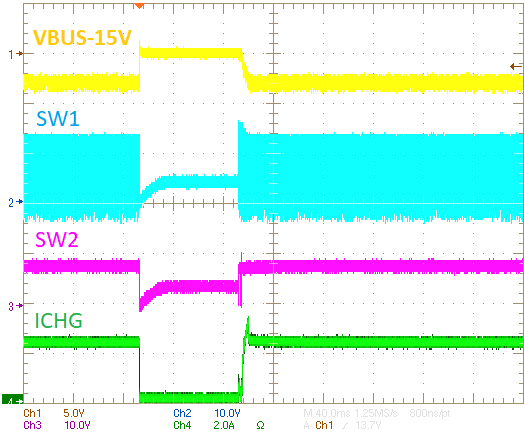SLUAAI1 December 2021 BQ25798
2.4 BQ25798 MPPT Algorithm
To ensure the MPPT algorithm fully works, the charger needs to be in VINDPM. The easiest way to ensure this is to set the charging current to maximum. The user can configure the battery charger to start the MPPT mode. The charger will turn off the input for the VOC_DLY time and measure the OCV. Then the charger will multiply the chosen VOC_PCT by the measured OCV and set the VINDPM to this value. The charger will resume charging until VOC_RATE has been met and the OCV will be measured again. The VOC_PCT chosen value will be determined by the user’s application. See Figure 2-2 for more details of the OCV measurement.
 Figure 2-2 Open Circuit Voltage Measurement
Figure 2-2 Open Circuit Voltage MeasurementBased upon the tested solar panel's measurement results, a VOC_PCT of 81.25% optimized the input power for a specific day. Assuming no significant change in sunlight conditions, the tested solar panel could remain at this setting all day across different seasons in order to maximize the use of the tested solar panel.
This algorithm helps the BQ25798 to perform in different temperature and sunlight environments. As the temperature gets colder the OCV of the panel will rise. However, the VINPDM setting will also rise because the VOC_PCT register value remains the same. This makes the BQ25798 an ideal candidate for a solar charger because it can handle the variations of the seasons and can be used in different climates around the world.